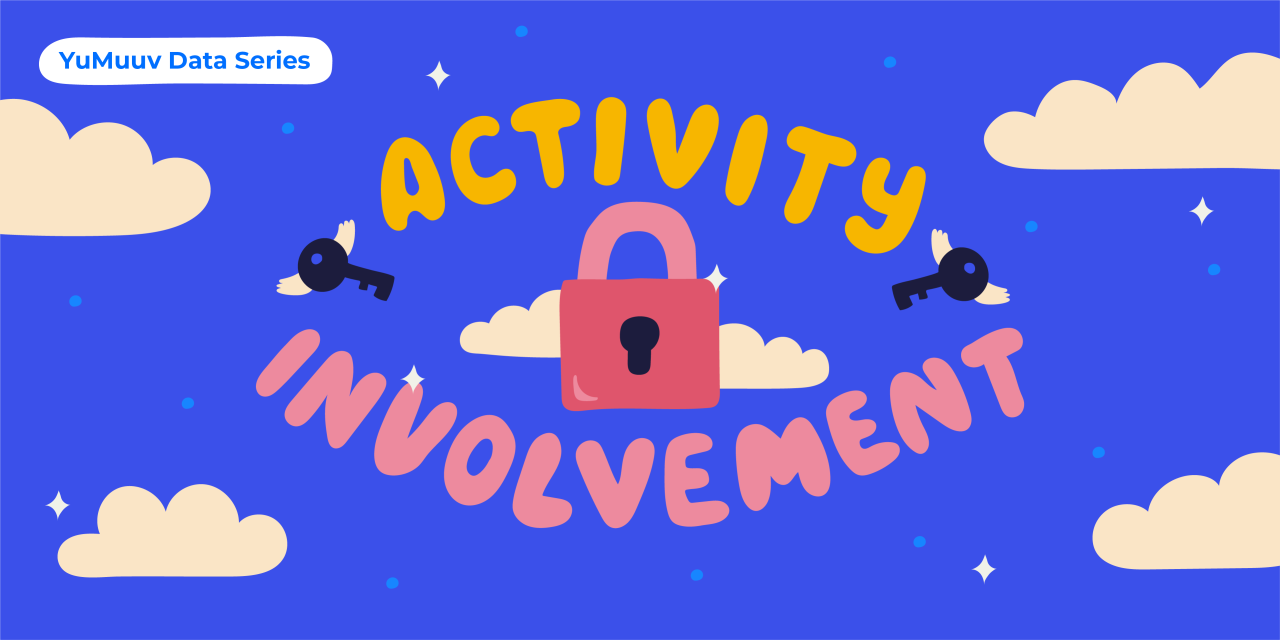
The Long-Term Key to Employee Engagement and Activity
Foreword
In the first part of the YuMuuv Data Series blog, we focused on analyzing the physical activity of our users by target group and whether and what correlations exist between different user characteristics. The main summary finding was the relationship between the presence of a heart rate measuring device and higher physical activity. The same finding is confirmed by all the latest research.
In this section, however, we want to focus on corporate culture. By reverse engineering the well-being of our employees, we can analyze successful companies and make their model available to everyone else. One of the key questions we are often asked is whether physical activity and employee involvement can be promoted in the long term through the YuMuuv platform. The easy answer is yes, of course. As proof and explanation, we have analyzed the statistics of our customers and brought you the most important findings and recurring patterns.
Table of Contents
Research Questions
Instead of broader quantitative statistics (as we pointed out in the previous section), this time we tried to dig more qualitatively into the data and find repetitive models, deriving possible trends from it. Thus, we focused more on illustrating the experience of specific companies. We asked the research questions in three main areas:
1. What is the impact of long-term use of YuMuuv on engagement?
2. What are the effects of long-term use of YuMuuv on physical activity?
3. What is the importance of organizing YuMuuv challenges for the above?
In the next section, we can go even more detailed and practical by analyzing the specific actions that companies take to achieve good results.
Limitations of the Analysis
First of all, it is important to note that one of the factors influencing the involvement of a company is the constantly changing number of employees over time. Although we have randomly examined the extent of team involvement, which in the case of SMB averages 40% of the total number of employees (may be significantly higher in the best cases), we do not collect information on the constantly changing team size, which may affect the number of employees involved in the platform.
Objectively, we can estimate the change in the number of YuMuuv users over time, bearing in mind that the general situation of the company is not included. In addition, we often do not know what companies' internal communications to their employees are about using YuMuuv.
This means that while one company can work very clearly to increase engagement and another may not work at all, we cannot say what part of the change was due to the platform's impact and what to its external activities. This would require more analysis, and we will certainly try to write on this in the future. However, we have analyzed the issue of the use of prizes and its impact to a small extent, but we also often do not have in-depth information on this issue.
Engagement
1. Engagement can be steadily increased
The first example illustrates very well the stable and growing involvement of employees. Of course, seeing such a curve inevitably raises questions about the company's own growth during this period, but comprehensive data show that while the company itself grew strongly (about 50%), YuMuuv's user base more than quadrupled over the same period.
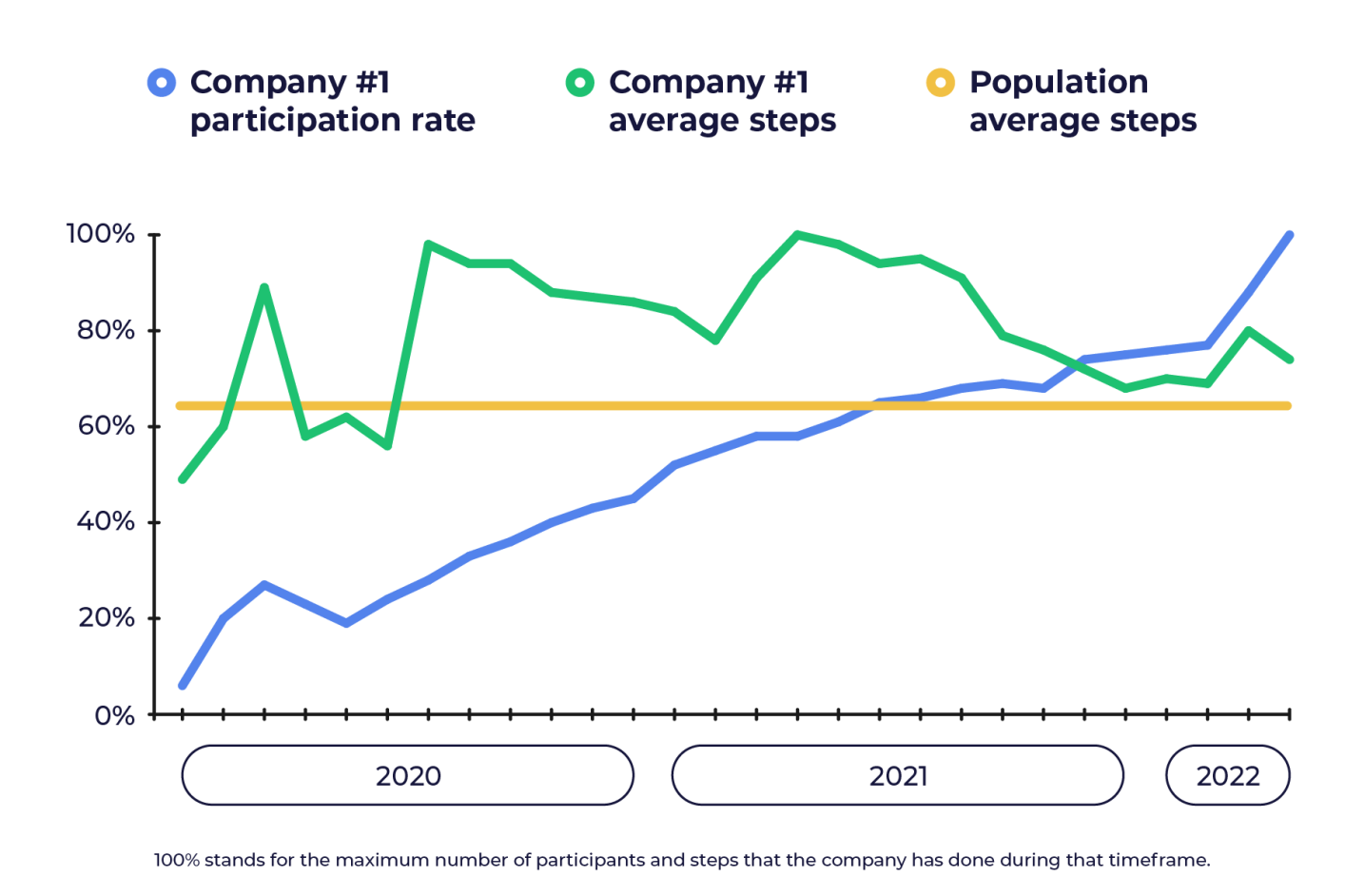
It has been possible to raise activity all the time with waves, but clearly. Thus, it could be said that it has been a matter of building a consistent culture, accompanied by good benefits and important communication. However, it is also certain that this is not a unique example, but a possible trajectory for anyone who wants to take the issue seriously.
2. Higher involvement may mean lower average activity
The following case is a clear example of how an increase in involvement can also reduce a company's average physical activity. This is mainly due to the fact that the most active workers are often the most active first natural entrants. Subsequently, employees with a lower level of activity will join, which may lead to a lower level of activity. On the positive side, however, the example infects others to try and join, and it creates the preconditions for cultural change.
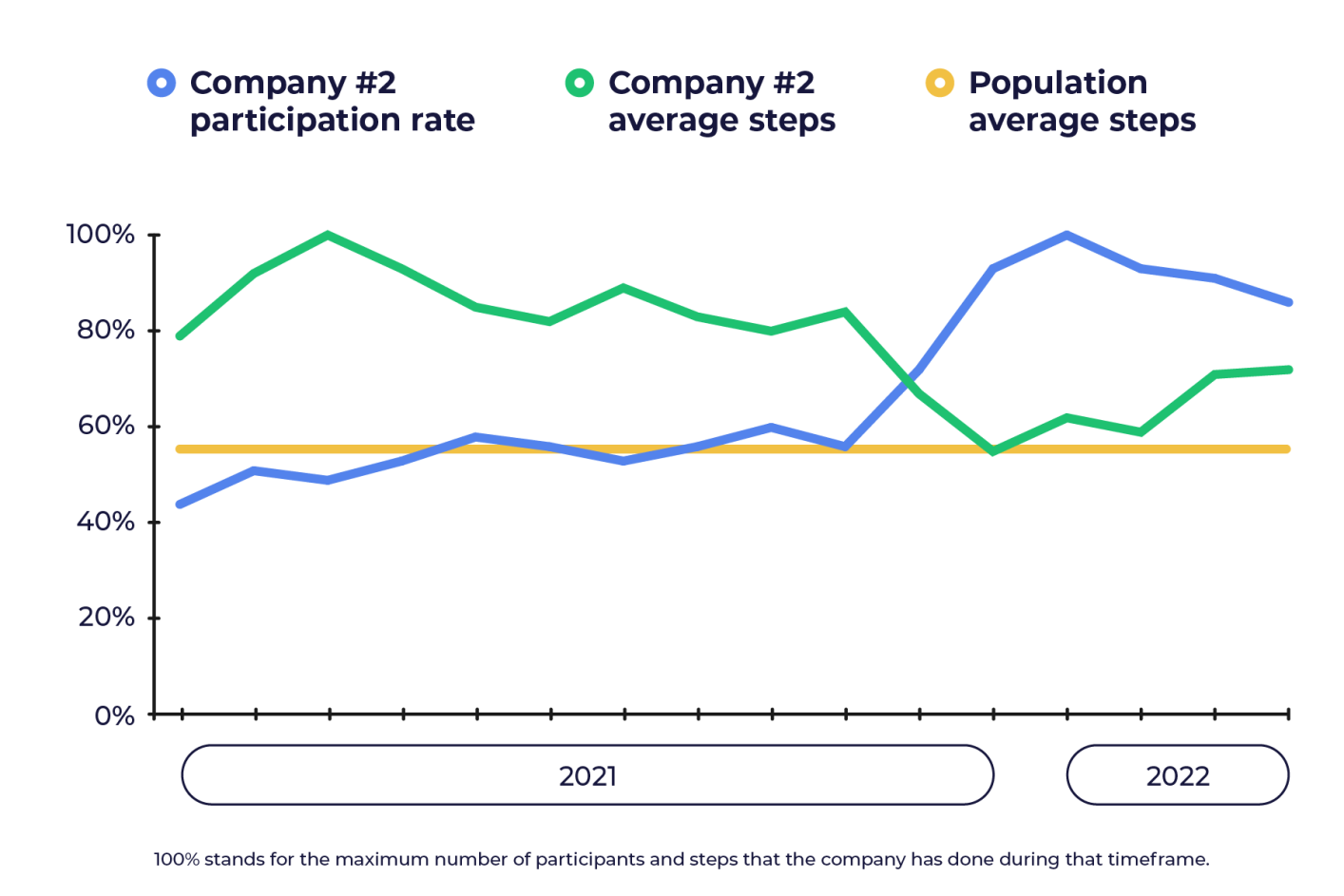
Against this background, however, it is important to keep in mind that simply monitoring the change in mean activity without an analysis of inclusion is unlikely to provide a complete picture. However, if active workers are able to motivate even the most passive to join, it will certainly show a broader system that values above all the physical form and ability that people have already achieved, but their desire to strive for development.
3. Challenges help new subscribers become active over time
As mentioned in the previous example, joining new employees can reduce average activity. However, this should not be the case. The example below shows how the activity of new subscribers has increased significantly in three months. This is a very good development and an important knowledge.
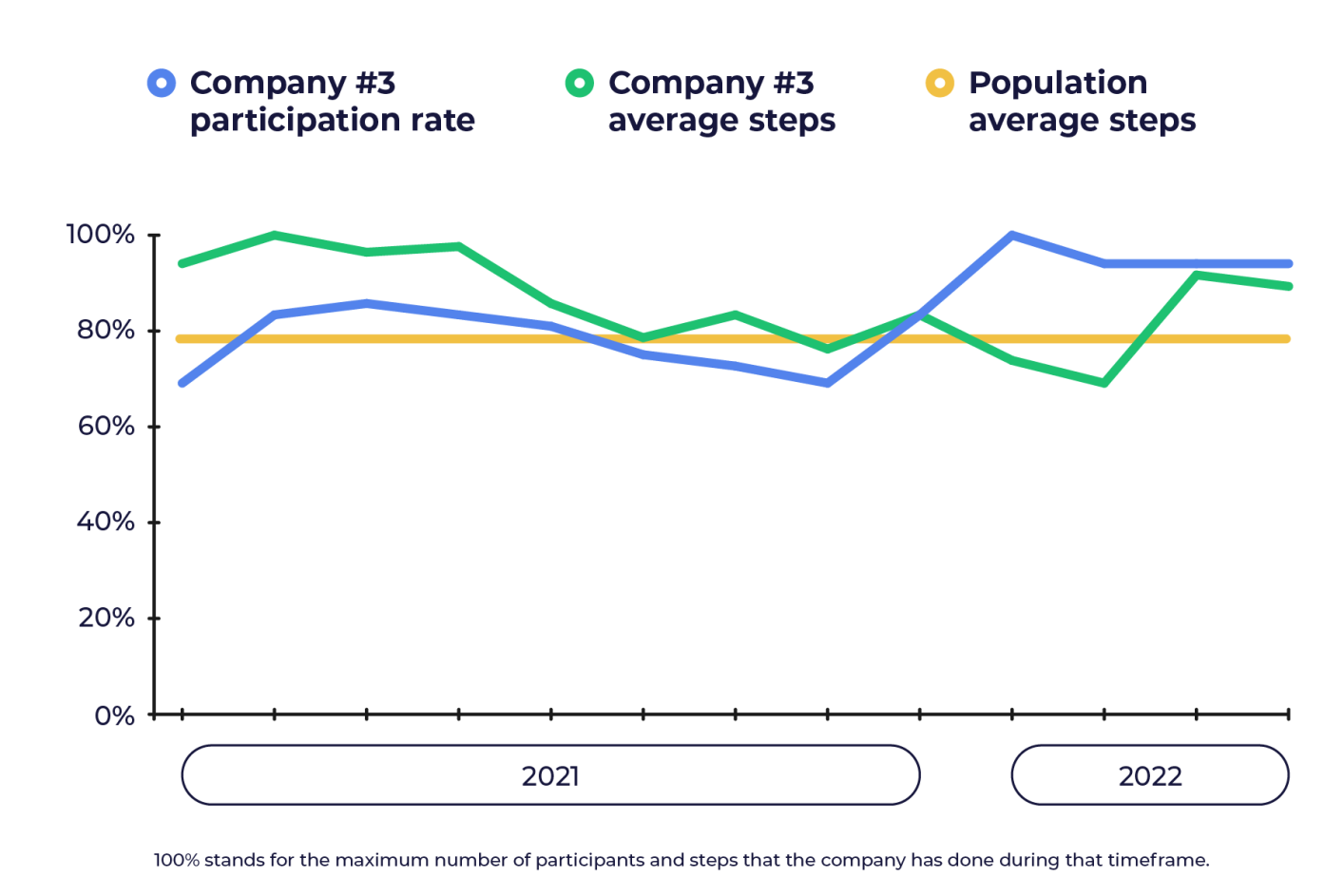
The use of different challenges to motivate certainly plays a role in a particular case. When the first few months are gone to settle down, new and healthier habits develop over time. The culture of movement that comes with using the app plays an important role in that.
Activity
1. Along with involvement, it is possible to increase activity at the same time
It is important to understand that with the increase in involvement, activity does not necessarily have to decrease, but can also rise. Below is a company that has been able to grow both categories relatively stably at the same time. It is definitely motivating and encouraging for everyone else.
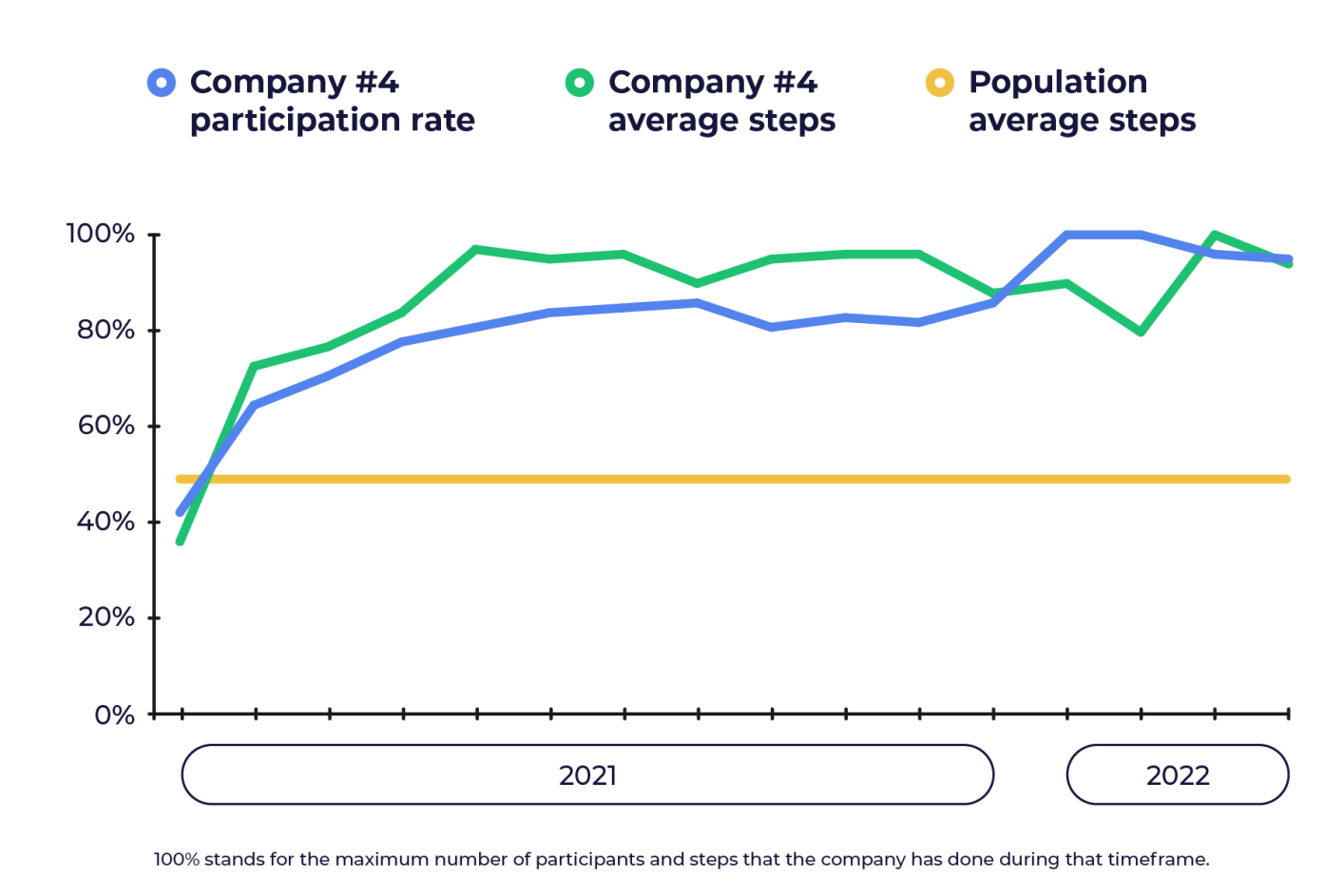
On closer inspection, it was noticeable that one important factor for this was to create different levels of challenge for different user groups at the same time. This gave the participants the opportunity to join the most challenging and at the same time most exciting challenges.
2. Involvement and activity may stabilize
The following example illustrates how it is possible to maintain a stable state achieved with a jump in the initial activity with relatively little effort. In particular, it reflects the fact that the application has been found by those who have wanted it, and that everything works as it should for them. Although the activity of such a collective is clearly above the average of society, the important question is how to increase involvement and activity over time, not just keep it stable.
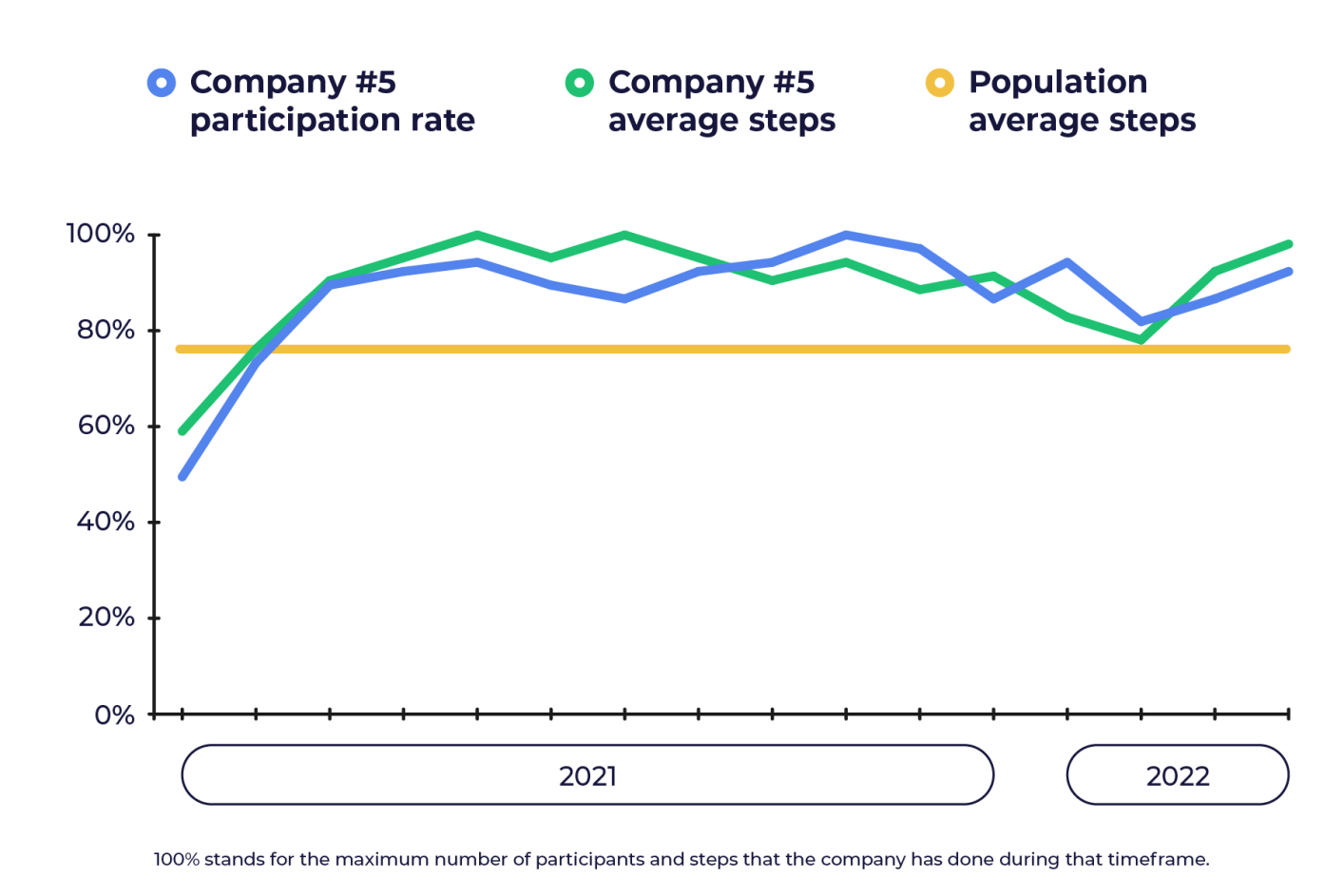
If you take a closer look at this company, it seems that they have not invested much resources in attracting awards or even new people. This would be necessary in order to give the first impetus to those who may not be motivated by the idea of a lifestyle change alone. It is an important observation that from time to time it would be important to do something bigger, such as a challenge with attractive prizes.
3. Involvement may decrease over time
When writing this article, our goal was not only to highlight the positive, but to show a complete picture of the different scenarios when using YuMuuv. For example, the graph below illustrates that engagement may decrease over time and still achieve approximately ⅔ user engagement, as in the example below.
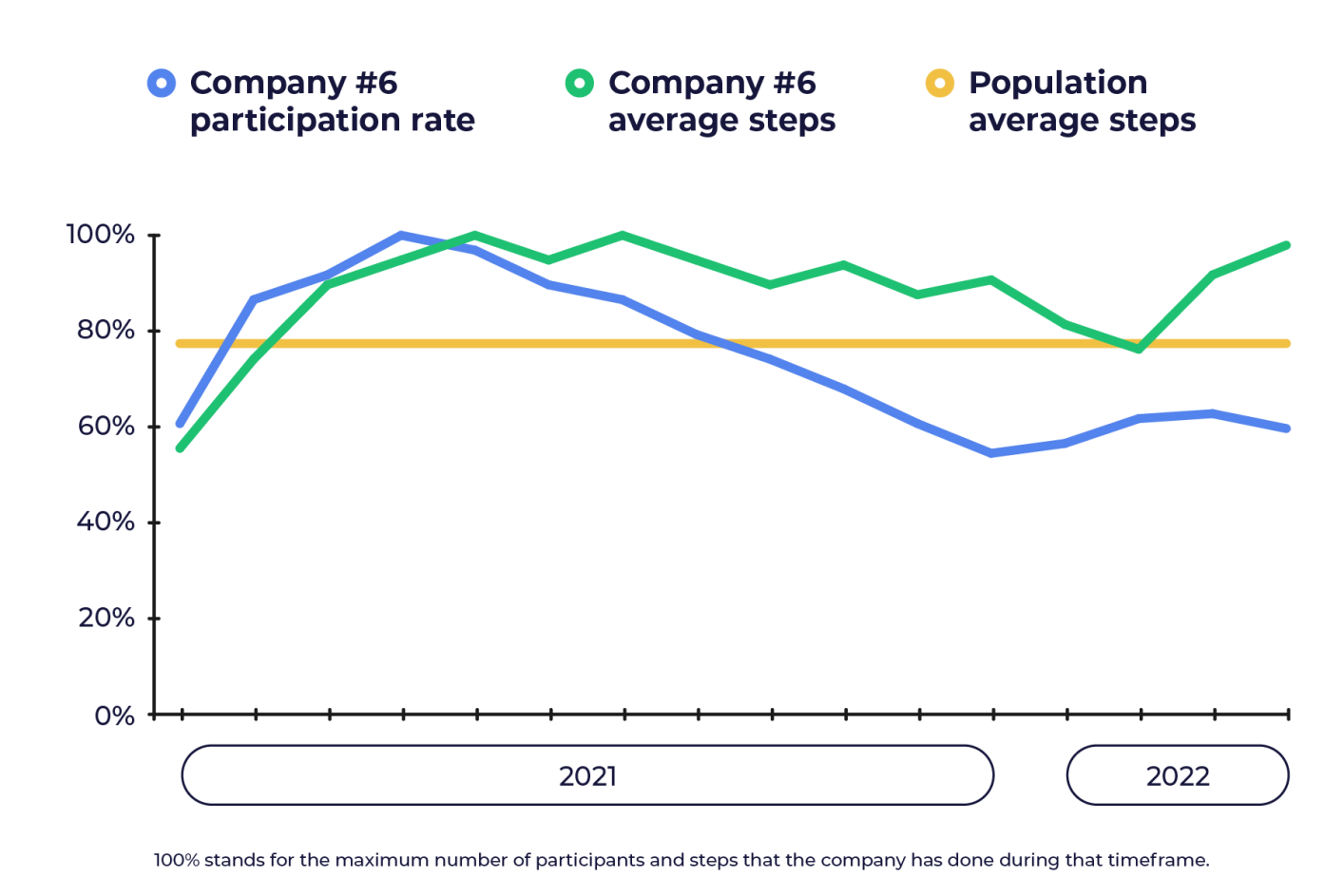
It is difficult to draw fundamental conclusions about the company's internal life, but the analysis has given the impression that the company has had to lay off its staff for clear commercial reasons in the recent period, including giving up the benefits of challenges. However, it is a fact that during the economic difficulties, they decided to continue using our product, which is a very strong sign of YuMuuv's value to the company. However, all this confirms that it is always important to see "behind the numbers" in order to draw bigger conclusions.
Challenges
1. Challenges affect physical activity
It is interesting to analyze the impact of the challenges on users' physical activity when taking breaks lasting more than a month. Although people have the opportunity to use the platform at other times, there is a growing trend of activity during periods when challenges are being held.
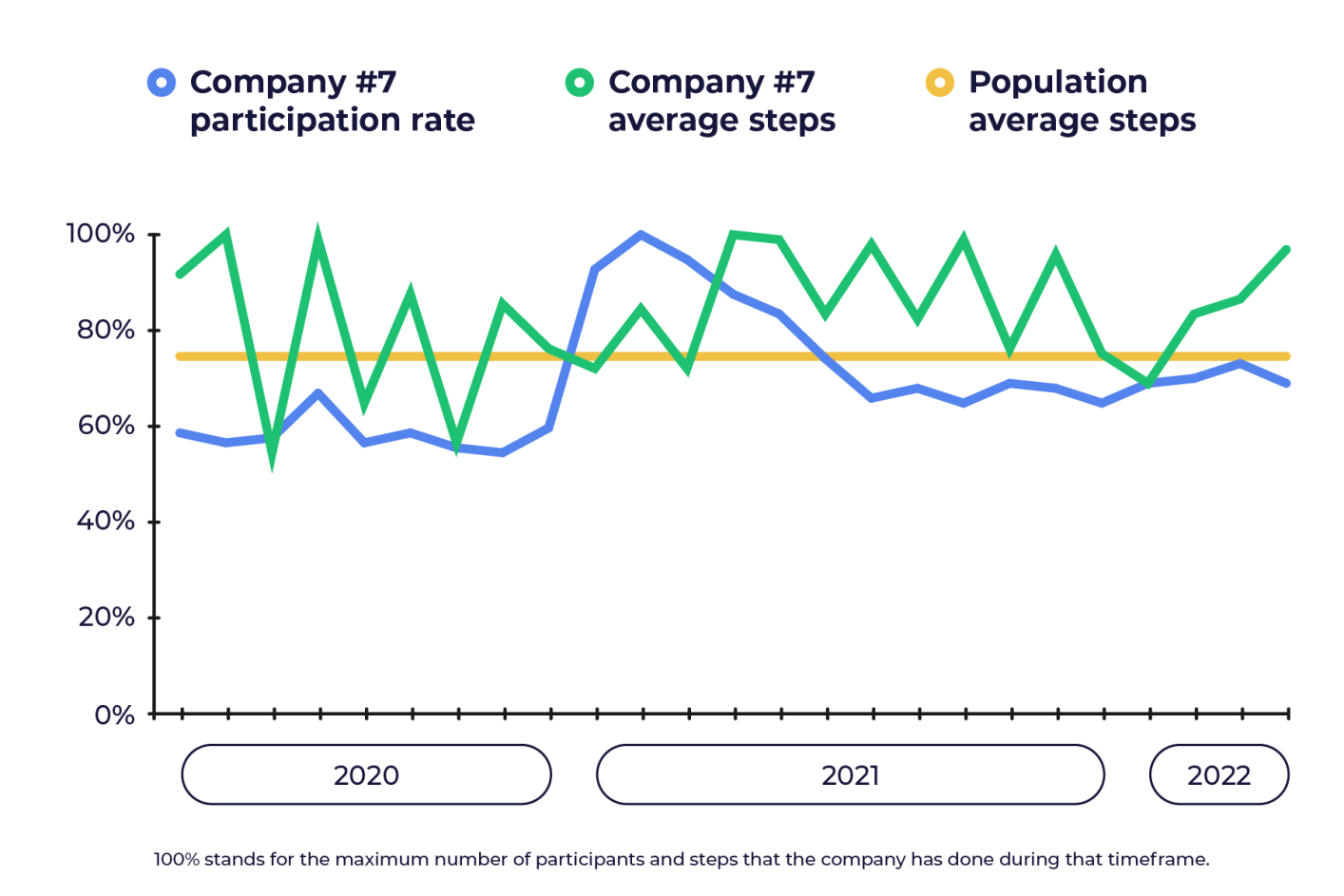
This shows that whether or not organizing challenges has a clear effect on employee activity. However, the question may remain as to whether the challenges will lead to a long-term shift towards a more active lifestyle. What is certain, however, is that the challenges create extra motivation to increase activity.
2. The effect of the break on the company's activity culture
The following is an example of a company that took a long break from using the platform (although we did not directly block individuals from accessing the platform). It is clear that the break has a negative effect on user activity. However, after a break from using YuMuuv on a regular basis, they have been able to keep their activity and involvement much more stable.
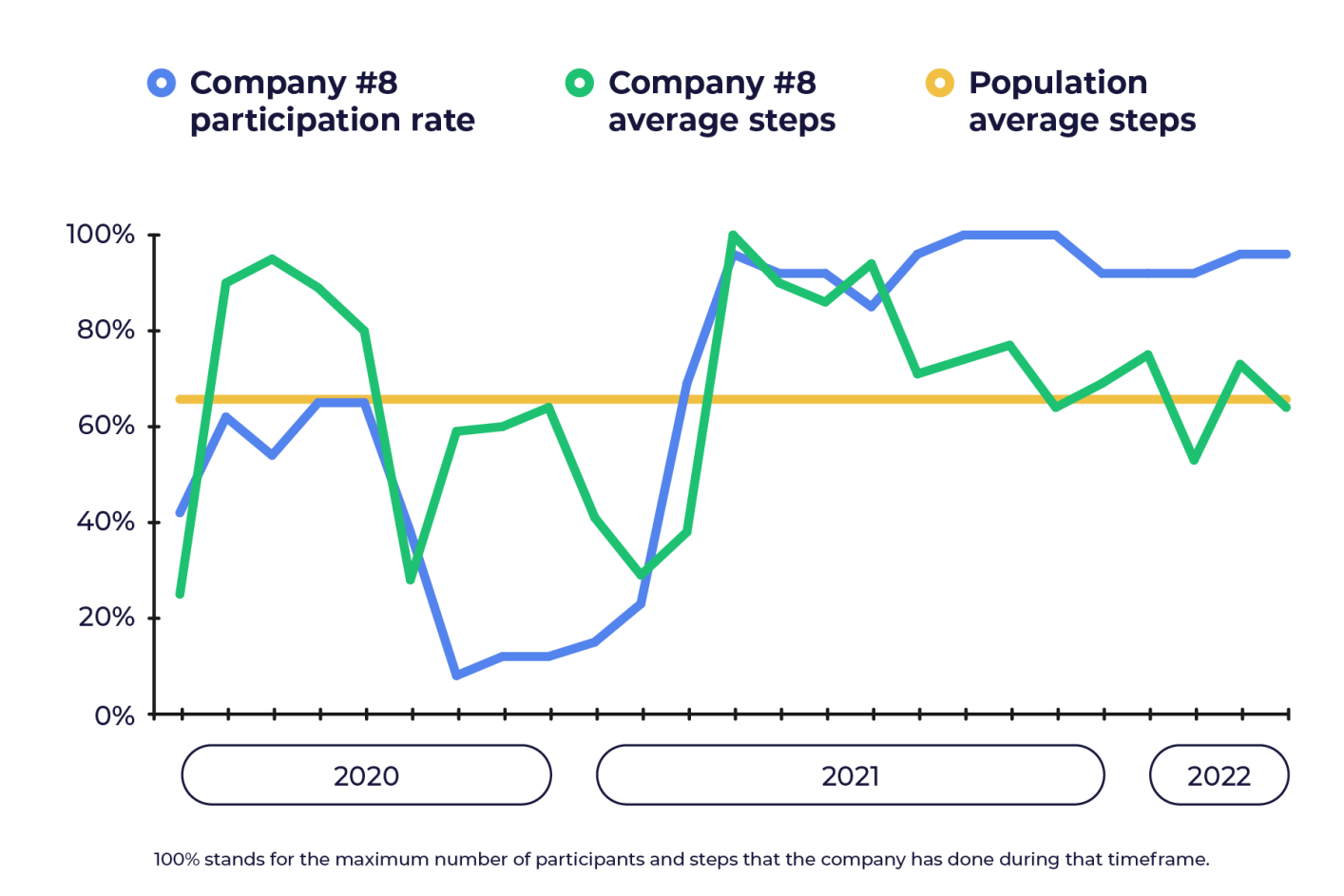
The big picture shows that YuMuuv as a tool is needed to stay active. Since it "takes" time to "warm up" and "cool down" in both cases, it is better not to take longer breaks in use. One good alternative is to take a break from, for example, mental health or sleep challenges.
3. The focus of the challenges determines the outcome
As a final example of the use of challenges, we cite a company that has consistently used the principle of rewarding all those who cross a certain level of activity, and not just a few.
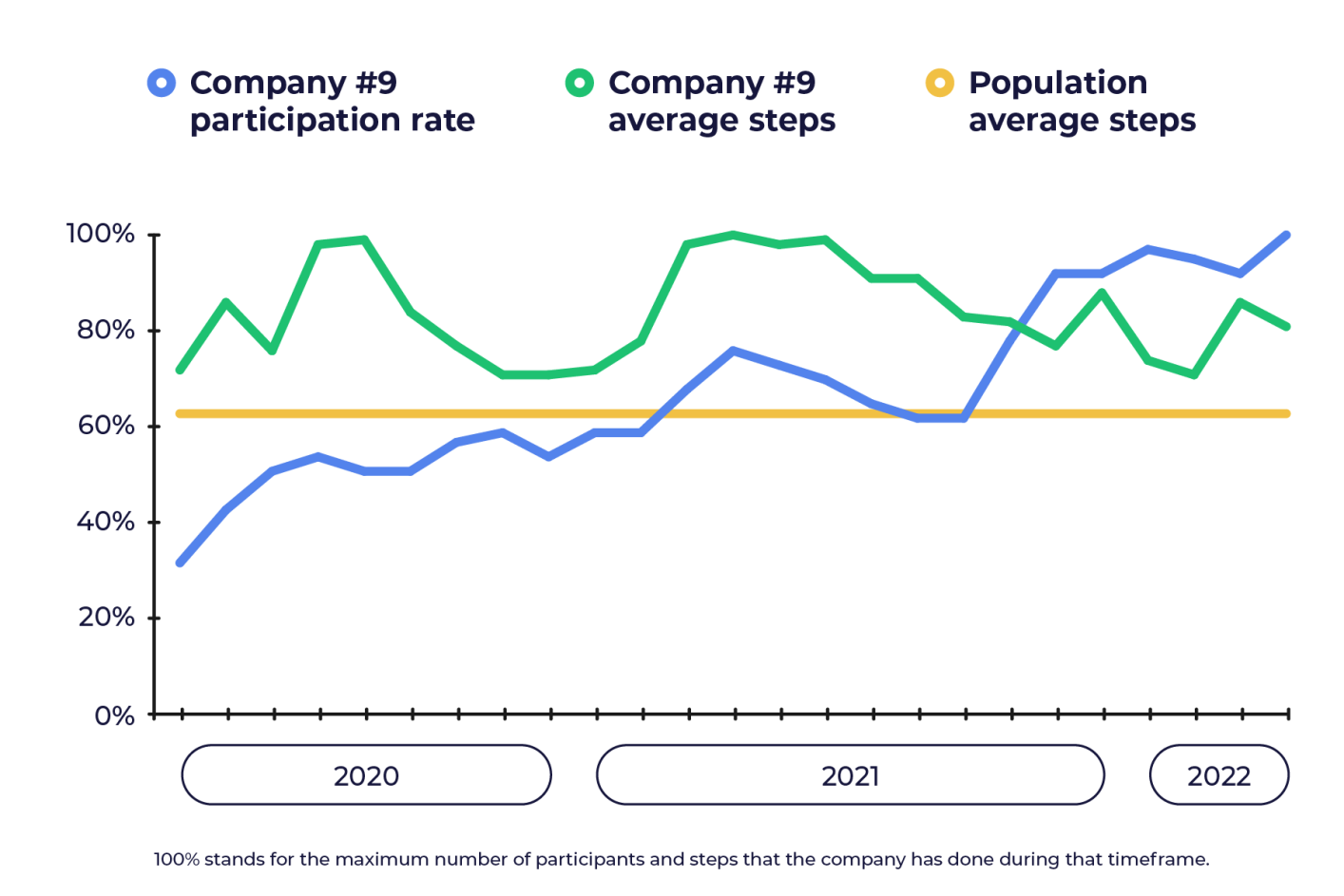
In itself, it is logical that if a company displays large lottery prizes to only a few, it may not motivate its colleague to join the challenge (because it reduces the likelihood of winning something). However, if the focus is on having something good available to everyone who is willing to make an effort, it will motivate others to join in.
Bonus
1. An exemplary example of a company
Finally, we want to highlight one of the best possible examples, which may not be the best in any of the categories, but certainly at least excellent in all of them. If the company has managed to increase the number of YuMuuv users by 50% in the last 16 months, it is undeniably doing the right thing.
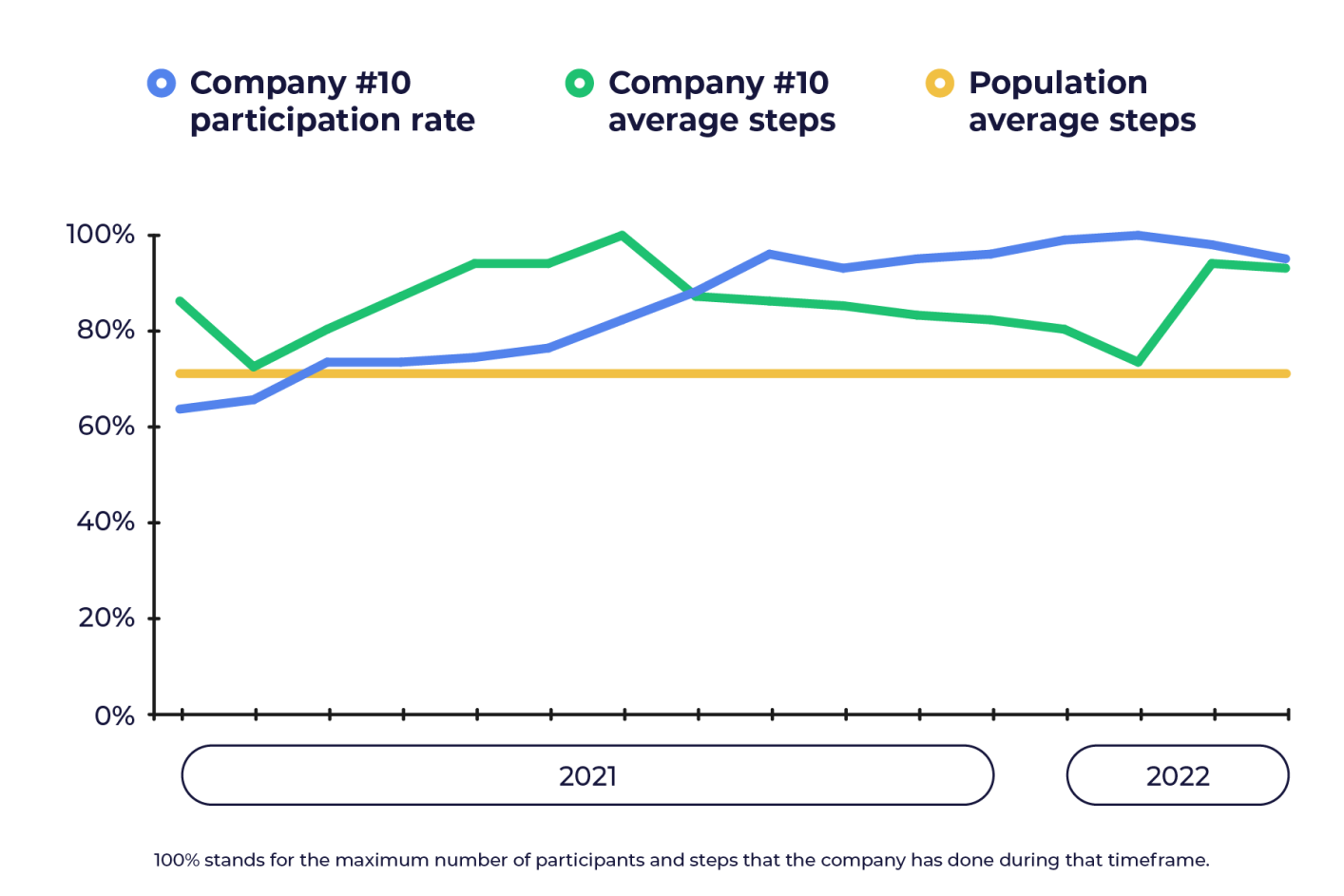
Analyzing the company itself in the background, it can be said that very clear and constant communication has played an important role. The company has constantly invested financial resources in measuring and rewarding the active lifestyles of its employees, and this has led to a breakthrough in the culture of the workplace and employee well-being. This is a worthwhile goal for any company to strive for.
Summary
It turns out time and time again that what we measure is what we value, and vice versa. If we care about the health and involvement of our employees, there should be no logical reason why YuMuuv could not help the company in the long run.
In addition to feedback from employees, mapping objective activity data is a good mirror for assessing the well-being of the work team. In conclusion, if high employee involvement and good physical activity are possible at the same time, it is worth striving in both directions.
